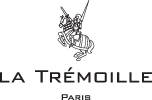
The Louvre
Discover the Wonders of the World’s Most Famous Museum
The Louvre is the world’s most visited museum. It is a city within a city; boasting a vast, multi-storey labyrinth of galleries, and home to the most famous paintings, sculptures and ancient antiquities from across the globe. The Louvre, with its rich history and diverse array of architecture is a veritable work of art in itself, and of course, there is nowhere else in the world that offers such profound insight into such an illustrious history of art.
A Long and Illustrious History in Paris
The Louvre started operating as a museum in 1793 with an exhibition of 537 paintings; it now holds more than 35,000 works of art and 380,000 historic objects. Since its inception, the museum’s extensive permanent collection has remained on constant display to the public – save for a brief hiatus before and during WWII when its contents were relocated to a Loire Valley chateau.
The original building was constructed in around 1190, as a fortress to protect the city from Viking invasions. In the 17th Century, the Louvre Palace was built on the site and became the residency of the flamboyant Louis XIV, before he moved the French Court to the Palace of Versailles. After his departure, the Louvre become home the Sun King’s extensive royal art collection, which was added to by Napoleon, Louis XVIII and Charles X over the course of the following century.
Rebuilt, expanded and embellished by a number of French kings, the ever-changing façade of The Louvre offers a true lesson in architecture. However, the most prominent of The Louvre’s many redevelopments would occur in 1989, with the construction of the controversial glass pyramid; a sharp contrast to the grandeur Renaissance architecture that surrounds it, but undoubtedly the feature by which the museum is most identifiable, cementing The Louvre’s place amongst Paris’ most recognisable attractions.

What Not to Miss: The Mona Lisa to the Venus de Milo
It is no secret that The Louvre is home to the Mona Lisa, and its dedicated exhibition space is easily located by the swarm of tourists that surround it; but besides the mysterious Mona Lisa, The Louvre is home to a number of other curiosities which are just as compelling.
One such treasure is the Venus de Milo, which has fascinated and intrigued since its discovery inside a buried niche, within the ancient ruins of the city of Milos in 1820. Thought to be created by Alexandros of Antioch between 130 and 100 BC, the sculptures missing arms and original plinth, has only aided in contributing to the mystery surrounding the iconic sculpture.
Also worth paying a visit to are the number of other works by Leonardo Da Vinci housed in The Louvre. His Virgin and Child with St Anne, believed to have been painted between 1503 and 1519 is one of his unsung triumphs; and is equally as enthralling and mysterious as the Mona Lisa, and moreover is largely ignored by the crowds.
Though not exclusively a work of art, the Napoleon III Apartments are well worth your time. The exceptional example of Second Empire grandeur is located on the first floor of The Louvre, in Richlieu rooms 83 – 89, and was designed by the architects Louis Visconte and later Hector-Martin Lefuel, between the years 1852 – 1857. Designed in Louis XIV style, the rooms still retain the original décor and furniture, and the gilded Second Empire interiors make for quite the viewing experience.

Getting Around The Louvre
The Louvre is divided between eight colour coded sections; Egyptian Antiquities – Near Eastern Antiquities – Greek, Etruscan and Roman Antiquities – Islamic Art – Sculpture – Decorative Art – Paintings – Prints and Drawings; and rooms are numbered, with orientation tables and panels in each room to make navigation around the museum easier.
A map is essential for making your way around the 60,600 square metres of the museum, and are available in 13 languages. Daily guided tours also take place regularly, and are a good way to discover the various attractions of The Louvre, especially if you are visiting for the first time.
Ultimately, there is too much within The Louvre to discover in one day so it is recommended that you pre-plan for the exhibits you want to see, or spread your visit to the museum over several days. It is not uncommon for visitors of The Louvre to make the journey to Paris several times throughout the year, with each visit to the historic museum unearthing different encounters with the world’s most revered art and artefacts.
Paris Travel Tips with Hotel Tremoille
Located in the 1st arrondissement of Paris along the Right Bank of the Seine River, The Louvre is easily accessed by the Louvre, Rivoli and Palais Royale and the Musée du Louvre Métro stations. Though busy throughout the year, with around 10 million visitors annually; the quietest months to visit are December and January, with the high season occurring between June and September.
Closed on Tuesdays, the best days to visit are usually Wednesday and Friday when the museum is open until 10pm, and visiting after 3pm will mean you avoid the more fervent of the crowds. We also recommend using the entrances by the Rivoli and Palais Royale and the Musée du Louvre Métro stations, as opposed to the main entrance through the famous glass pyramid, which is where the largest queues form.


